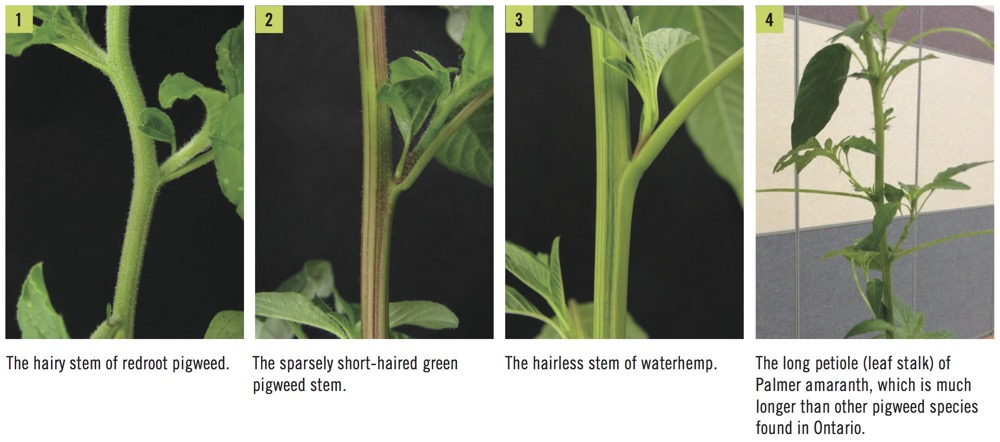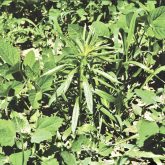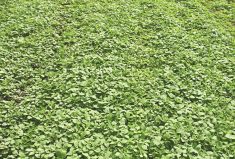Do we have Palmer amaranth in Ontario? How do I tell it apart from other pigweeds?
Thankfully, Ontario does not have Palmer amaranth, a pigweed species that in the U.S. is resistant to five different herbicide modes of action (Table 1 below). However, we do have waterhemp, another pigweed species that is often confused with Palmer amaranth and that is resistant to three herbicide modes of action (Table 2 below).


Waterhemp has only been found in Essex, Lambton and Bruce counties. It should be pointed out that when the species was identified in Bruce County, the landowner aggressively removed all plants before they set seed. Subsequently this species has not been seen in the area since it was first discovered in 2002.
So let’s get specific about how would you know if you have either waterhemp or Palmer amaranth instead of the more common redroot and green pigweeds.
Step 1: Does the stem have hair? If the answer is yes, you can rule out either waterhemp or Palmer amaranth. Redroot pigweed has a very hairy stem (Figure 1; image at bottom), green pigweed’s stem is comparatively less hairy but a cluster of fine hairs exists near the top of the plant (Figure 2;image at bottom). By contrast, waterhemp and Palmer amaranth have hairless stems (Figure 3; image at bottom).
Step 2: If the plant’s stem is hairless, is the leaf stem (called a petiole) longer than the leaf? If the answer is yes, it’s most likely Palmer amaranth (Figure 4; image at bottom).
Step 3: Send it to a taxonomist to confirm. If you really think you have Palmer amaranth, that would be a very significant find and it’s a species that we would not want to see spread very easily. You can contact me and I will co-ordinate having the plant identified by a taxonomist.
Have a question you want answered? Hashtag #PestPatrol on Twitter to @cowbrough or email Mike at [email protected].















